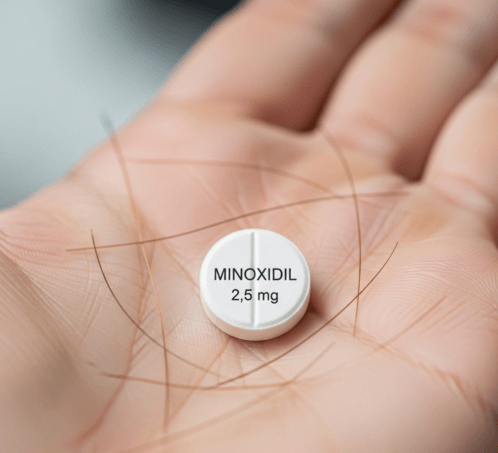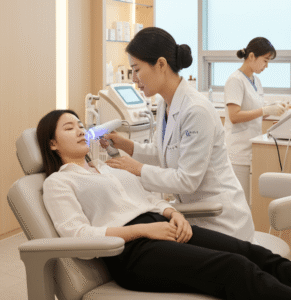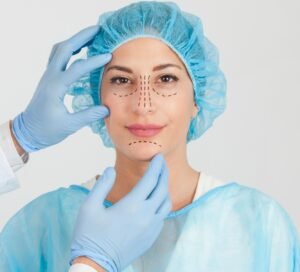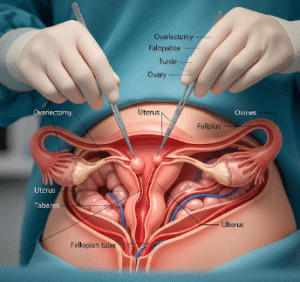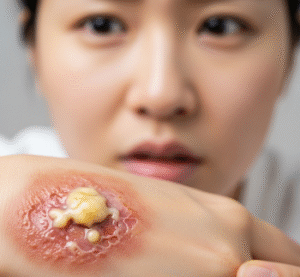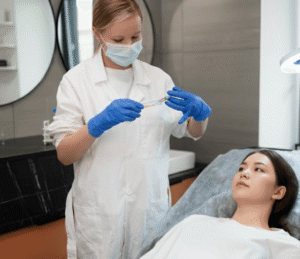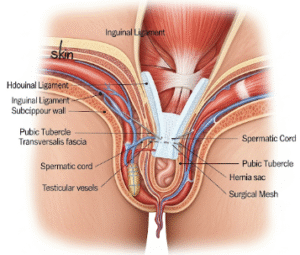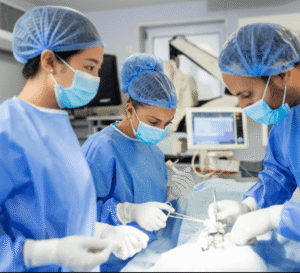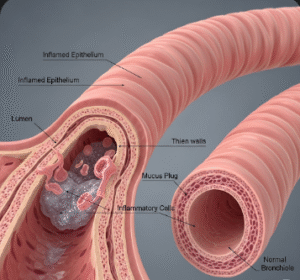What it is
➝ Oral minoxidil was originally developed as an antihypertensive medication (a vasodilator), but at low doses it has been repurposed for hair growth stimulation.
➝ Unlike topical minoxidil, which works only at the site of application, oral minoxidil provides systemic follicular stimulation, often producing more consistent regrowth in both men and women.
➝ It is now increasingly prescribed worldwide and in Korea for androgenetic alopecia, telogen effluvium, traction alopecia, and alopecia areata (adjunctively).
Why it’s done
→ To improve hair density and thickness when topical therapy is inadequate or not tolerated.
→ To enhance compliance (oral tablets are easier than daily topical application).
→ To treat diffuse hair loss or hard-to-reach scalp areas where topical minoxidil may be less effective.
→ To provide an adjunct to other therapies such as finasteride, dutasteride, platelet-rich plasma (PRP), or hair transplantation.
Alternatives
→ Topical minoxidil (2% or 5% foam/solution) – standard first-line option.
→ Oral finasteride or dutasteride – 5-alpha-reductase inhibitors for androgenetic alopecia.
→ Spironolactone – in women with female-pattern hair loss.
→ PRP injections, mesotherapy, and stem cell therapy.
→ Hair transplantation for advanced or refractory cases.
Preparation
→ Clinical evaluation to confirm type of hair loss (androgenetic, telogen, mixed).
→ Baseline blood pressure measurement, since minoxidil lowers BP.
→ Review of cardiovascular history (arrhythmia, heart failure, hypotension).
→ In Korea, dermatology clinics often perform digital trichoscopy, scalp photography, and hair density analysis before starting therapy.
How it’s Done
→ Typical doses for hair loss are far lower than for hypertension:
- Men: 2.5–5 mg daily.
- Women: 0.25–2.5 mg daily.
→ Tablets are taken orally once daily, usually in the evening.
→ Dose is titrated upward based on tolerance and response.
→ Oral minoxidil is often combined with other treatments: - Finasteride/dutasteride in men.
- Spironolactone or cyproterone acetate in women.
- PRP or laser therapy for synergistic effects.
→ In Korea, dermatologists frequently use combination regimens to maximize results while minimizing risks.
Recovery
→ Initial improvement usually visible after 3–4 months.
→ Continued use over 6–12 months leads to significant increases in hair density and shaft thickness.
→ If discontinued, effects gradually wear off and hair loss resumes.
→ Patients often report less shedding within weeks and new visible growth by the third month.
Complications
→ Hypertrichosis (excess hair growth) on face or body, especially in women.
→ Fluid retention, ankle edema, or mild weight gain.
→ Dizziness, hypotension, tachycardia, or palpitations in sensitive patients.
→ Rare: pericardial effusion (usually only at higher doses).
→ In Korea, close monitoring is performed during the first 1–2 months, especially in patients with low baseline blood pressure.
Treatment Options in Korea
→ Low-dose oral minoxidil is increasingly offered in dermatology and hair restoration clinics for patients who fail or dislike topical therapy.
→ Korean dermatologists use customized dosing protocols (micro-dosing in women, higher doses in men) based on patient profile.
→ Oral minoxidil is often prescribed together with finasteride, dutasteride, or PRP therapy for maximal benefit.
→ In cosmetic dermatology centers, digital hair density imaging is routinely used to track progress every 3–6 months.
→ Safety monitoring includes blood pressure checks and cardiovascular review at baseline and follow-ups.
→ With Korea’s strong expertise in aesthetic dermatology and hair science, oral minoxidil is considered a safe, effective, and convenient adjunct or alternative to topical therapy, especially in motivated patients seeking visible results.

